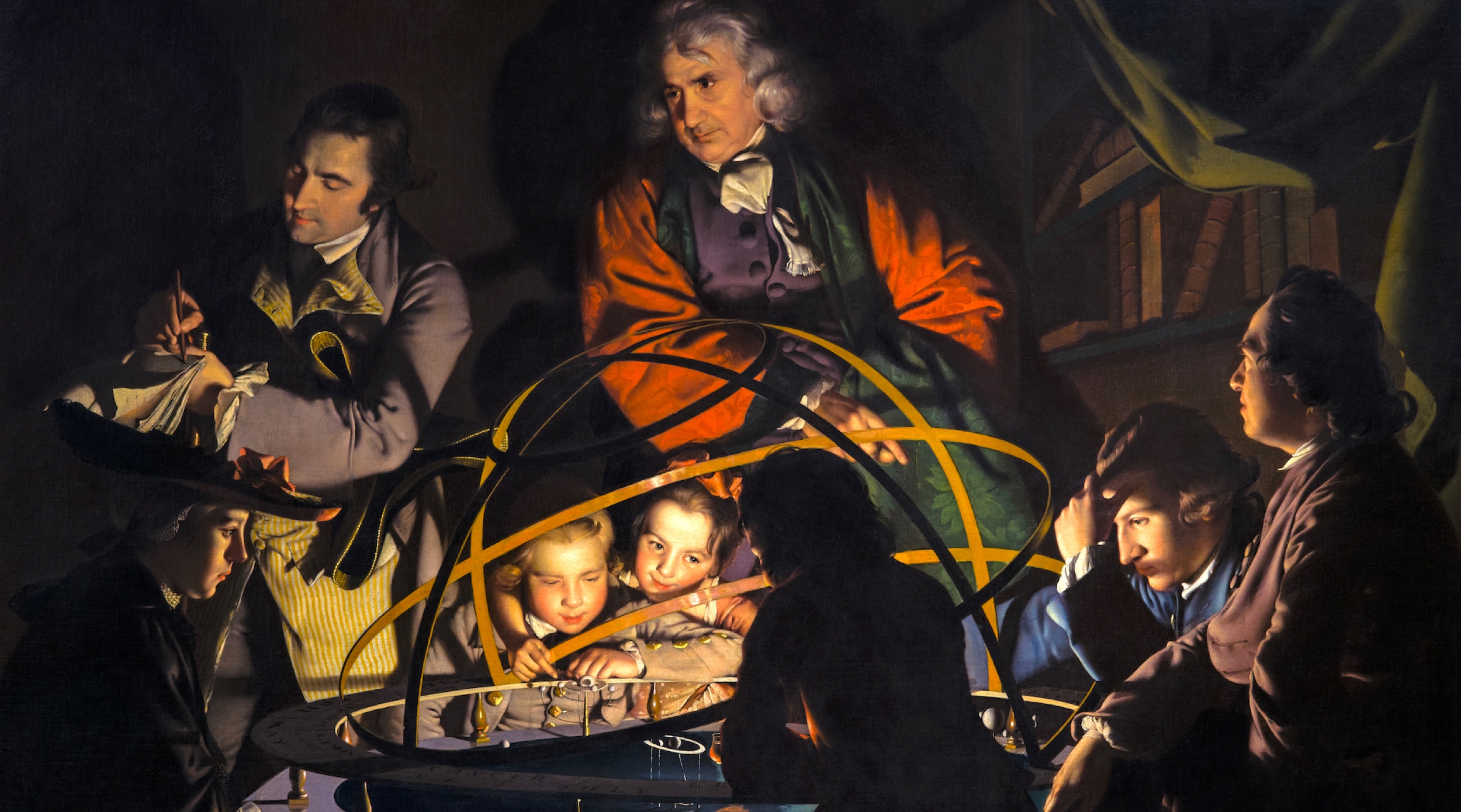Design
What’s next for design:
Towards humanity-centered design

On the eve of a historical election, 2016’s Fast Company Innovation Festival was about hope and potential. In the wake of a historical upset, 2017’s was about resilience, values and impact that we as individuals, communities and organizations should strive for. What both conferences had in common is an overarching theme about how design-driven innovation is transforming established companies while giving non-profits and smaller companies new ways to disrupt obsolete tropes, engage new and underrepresented audiences, and improve lives. But is design enough and how should it evolve to address the complex, interconnected problems we face today? And could we have done more to prevent some of these problems from getting out of hand?

In the last 60 years, as Jo Szczepanska’s fascinating chart shows, design has done an outstanding job evolving to address the problems of the day, while extracting and incorporating insights from other disciplines. In fact, it is this endless curiosity and openness to ideas from other fields that has made design key to some of the biggest innovations of recent history – from the iPhone to the Tesla, from the eSight glasses for the blind to VICIS ZERO1 football helmet. More importantly, it is this focus on empathy and understanding of the users, their values and experiences that has made designers stand out as modern day humanists casting a renaissance light in a world transformed by technology. As a result, human-centered design and design thinking become part of the college curriculum, even outside of design programs, yesterday’s mothball behemoths are building design led innovation teams, demand (and compensation) for designers is through the roof.
But with recognition, comes responsibility. If followed blindly and left unchecked, this cult of designing for the individual today can have disastrous long term and unintended consequences. A platform designed to connect becomes an addictive echo chamber with historic consequences (Facebook); an automation system designed to improve safety undermines our ability to seek information and make decisions (the plane autopilot); a way to experience a new destination like a local squeezes lower income residents out of affordable housing (Airbnb). Each of these examples is recognized as a real product or service design feat. Yet by focusing on the individual person alone, we often fail to take into account the cognitive and social biases that lead to broad unintended consequences. By zeroing in on the short-term impact and benefits of our designs, we spare ourselves asking the really hard question: Are we designing a world we all want to live in today and tomorrow?
To be agents of positive change, we as designers need to think more broadly about the direct and secondary consequences of our work. We need to be clear-eyed about what we are striving to do and minimize the chances of creating more problems than we are trying to solve. To do that, we need to integrate our discipline with systems thinking, which takes into account the linkages, interactions and underlying structures of dynamic systems over time. This will allow us to anticipate and mitigate the negative longer-term consequences of well-intentioned solutions. As a result, we will be poised to design systems that have minimum negative impact, create and sustain equity, and build on technological advances without disrupting the foundations of society. We have the responsibility to evolve from human-centered design thinkers to humanity-centered designers by changing our perspective, our timeline and our methodology. Here is how.
New perspective: Don’t just ask: “How might we?” ask: “At what cost?”
As designers and design thinkers, we have been preoccupied with questions like “What if” and “How might we.” They have undoubtedly unleashed our creativity and helped us explore new solutions to problems both big and small. How might we enable people to rent out their homes? What if we could digitize your personal health record? But these questions are fundamentally narrow. They overemphasize the individual direct user, without taking into account broader, longer term consequences. They absolve designers of the broader responsibility to society. We still need to do ethnographic research, create empathy maps, and understand the interests, biases, and motivations of the people our designs would affect immediately. The key difference when we adopt a systems approach is that we can examine broader implications: By providing a benefit to one group of people, are we negatively impacting another (in the case of Airbnb: local low income residents)? Are our values sustainable in the face of the behavior shifts our designs create (in the case of the plane autopilot: sustaining knowledge and expertise in the advent of automation)? What is the environmental and social cost of a product or what happens at the end of its life?
Focused attention on long term preferable outcomes, is a powerful, yet underused technique we are starting to use to improve our work, our society and our lives. When we take the time to collectively craft our desired outcomes, we can unleash our creativity to advance our shared interests. Outcomes thinking starts by defining a preferable future state then works backwards to identify necessary actions and steps that will connect the future to the present. Called backcasting, this technique has been long used in philanthropy. Unlike forecasting, which is reactive, backcasting is proactive as it requires you to define an ideal outcome and align your efforts to achieve it. And in defining the ideal outcome, you are forced to think about the negative paths you have to strive to avoid.
New timeline: Short termism must die
Present bias, or our tendency to prefer immediate gratification to longer term future payoffs, is universal. It is perhaps one of the reasons why the cult of Agile development and Silicon Valley’s “run fast and break things” ethos have become the prevailing way of thinking. When the result is a well-designed, relatively innocent but flamboyant failure like the latest silly gadget, we laugh it off and pretend that we would never make the same mistake.
But there is a more significant consequence: this short termism prevents us from solving the dizzying array of super challenging long term problems we face: climate change, growing political instability and polarization, growing economic inequality, unsustainable social systems like Social Security and healthcare, and the increasing impacts of digital systems from privacy and security challenges to the specter of joblessness from AI and automation.
Given our fetish with the new and our insatiable appetite for growth, people are often tragically focused on short-term improvements rather than thinking through strategies and long-term impact. This pattern repeats itself at the corporate, and government scale, with examples to spare: single use products leading to plastic in your seafood; short term government support for coal resulting in miners rejecting retraining.
Design thinking as a process with its emphasis on rapid prototyping, testing, iterating, is at least partially to blame. While it was never created to replace strategic planning in organizations, it struck a chord with organizations under pressure to transform as quickly as possible. The result is a cornucopia of gadgets, most of them destined for the landfill barely after the lights of the annual Consumer Electronics Show have dimmed.
While the interdisciplinary approach and customer focus of design thinking is as valuable as ever, it needs to be bolstered with critical thinking about long-term business, social, and environmental impacts. If you are building a product that enables people to manipulate how we perceive the world, for example, how do you design it in a way that provides absolute transparency so users can recognize what’s real and what is not? If you are designing a new farming technology, how do avoid reinforcing the short term consumerism that is at the core of so many of our environmental troubles?
New methodology: Build on best practices but capture the flag
We are not the first to wake up to the need to think more deeply about the impact of our work. Corporate social responsibility, triple bottom line, and shared value are practices that are gaining mindshare, with all kinds of large organizations declaring their commitment to creating sustainable positive social impact. But without the tools and investment to turn mindshare into action, that commitment is not enough.
Initiatives like The Designers Accord, Circular Design and Inclusive Design are steps in the right direction – building on human-centered design practices to address the reality of our interconnected world or what the Ellen Macarthur Foundation calls the circular economy. Designers are well-positioned to lead this evolution. Having secured a seat at the proverbial table, we have the influence to start these conversations with other stakeholders –business leaders, scientists, marketers, environmentalists. Our training in research and empathy can help reconcile diverging priorities. We are good at solving complex challenges and reframing problems. Above all, we are masters at creating the tools that help people with different backgrounds, ideas, and priorities align on big ideas and intangible concepts.
The Fast Company Innovation Festival left us hopeful yet aware of how much work we need to do. Thought leaders and innovators stated their commitment to building a better future again and again. However, examples of making the tough choices to do what’s right rather than just say it were few and far between. It is on us as individual designers and an industry to broaden our perspective, extend our timelines, and develop the tools and methodologies to remain at the vanguard of positive change. We have to do more and faster.



